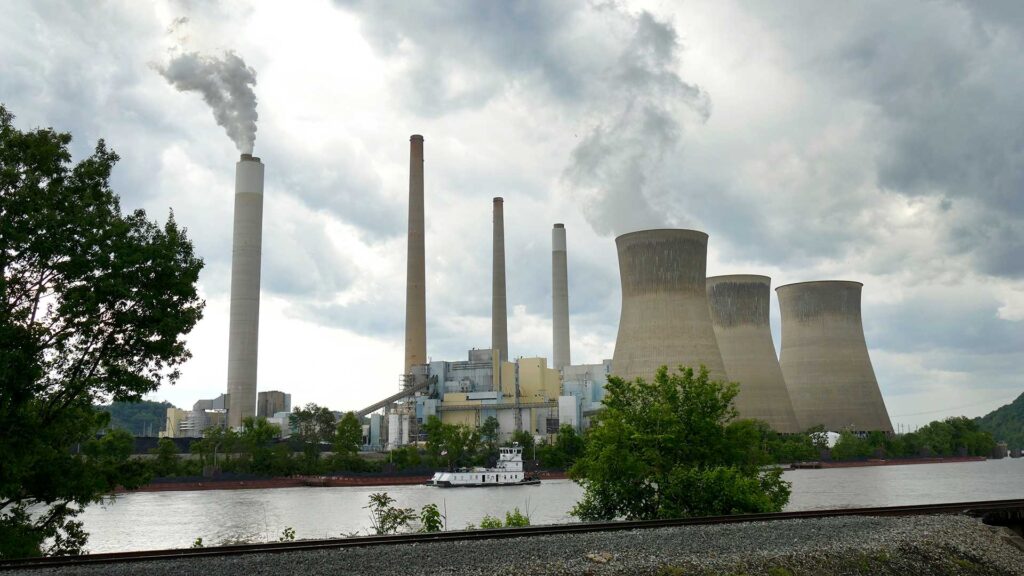
This article was initially published in Maryland Today by Chris Carroll on Jan 26, 2021. Click here to see the original version.
From revoking the permit on the Keystone XL natural gas pipeline to starting the process of reversing Trump-era polices on national monuments, endangered lands and species, and energy exploration, the environment stands near the top of President Joe Biden’s immediate agenda. The centerpiece was an Inauguration Day executive order to rejoin the Paris Climate Agreement, negotiated by the nations of the world (with key oversight from a Terp) to head off the devastating effects of climate change, from famines to coastal flooding.
Ross Salawitch, a professor in UMD’s departments of Atmospheric and Oceanic Science and Chemistry and Biochemistry, wrote a book on the agreement ratified in 2016, and has been monitoring its highs and lows in the years since. He sat down (via Zoom) with Maryland Today to discuss the United States’s about-face in global diplomacy, the science and technology challenges and the woeful domestic politics all wrapped up in this effort to save the world.
Can the U.S. drop back into the Paris Climate Agreement where we left off?
We just walk right back in. It was constructed that way because, in the latter years of the Obama administration, after President Obama had agreed bilaterally with China on emission reductions for the two nations, it was clear that the U.S. Senate was not going to approve this plan. The Senate, which has to approve treaties on greenhouse gas reductions, for years has made it very difficult to take meaningful action. So the whole design of the Paris Climate Agreement was such that we could be in or out based on presidential decree. That’s obviously scary.
So it’s centered on U.S. electoral politics, and if a President Ted Cruz steps into the Oval Office in 2025, we’re out again?
Sadly, that’s the case. Even the date for next big meeting on the agreement—what’s called the Conference of Parties—in Glasgow, Scotland, in November 2021, was picked to give the international community a year to respond to the outcome of the recent U.S. presidential election.
Can we still meet the original greenhouse gas-reduction commitment the United States made?
If we project what the U.S. has done over the past few years prior to COVID and project that forward using standard metrics, we’re likely to fall just short of the goal we had committed to, which is a 26% to 28% reduction in emissions of all greenhouse gases by 2025, relative to a 2005 baseline. Another way to say it is we’re likely to fall a year or two short of meeting our commitment.
That’s not so bad. Right?
Regardless of whom the president was, carbon efficiency of the economy has been improving. One of the major drivers is the transition from coal to natural gas for generating electricity. We get nearly twice as much electricity per CO2 unit released to the atmosphere with natural gas. The problem is that you’re stuck with natural gas power plants for a long time. To really save the world from climate change, we have to go further than that can take us, and quickly.
How could we do that?
It could mean three things. One is stepping up the productivity of renewables like wind and solar. Another might mean increasing electrical supply from nuclear, which some very prominent scientists have argued is the lesser of two evils. The third is an interesting one, and it does have some bipartisan support. We would continue to rely on fossil fuels, but really scale up a technology called carbon capture and sequestration … power plants would capture the carbon and bury it, rather than release it into the atmosphere.
What policies are the Biden administration weighing?
That is a great question, and one on which not much is known right now. Sometime before November, there will be a big announcement about how the U.S. will modify its NDC, or nationally determined contribution to reducing greenhouse gas emissions under the Paris agreement. The buzz is that the U.S. will roll back the target date to 2030. What the actual target will be isn’t known, but what has to happen is that we need to start working hard to build a green economy.
Does our return to the Paris agreement help other countries meet their goals?
It does, and that’s what made the U.S. pulling out of the agreement so dire. The way the agreement was structured, countries like the U.S. and European Union countries made unconditional commitments. But many developing-world countries made what is termed “conditional” commitments, including India and countries in Africa. Those were conditioned on financial assistance—often access to low-interest rate capital and technology transfer. So the U.S. pullout led to much less progress in those areas, which are crucial to preventing the worst-case scenarios.
What’s the current state of climate denialism?
Scientists would like science to be in its basket, and then we all can have our own political colors and stripes—but that ain’t the case. It is so sad on so many levels that, as study after study has shown, denialism is strongly correlated with party affiliation and political beliefs. When Biden announced that the U.S. would rejoin the Paris Climate Accord on the day of his inauguration, within 24 hours, Senator Cruz had tweeted that Biden cares more about the people of Paris than he cares about the U.S. How can you have a meaningful conversation when there is such incredible ignorance?





